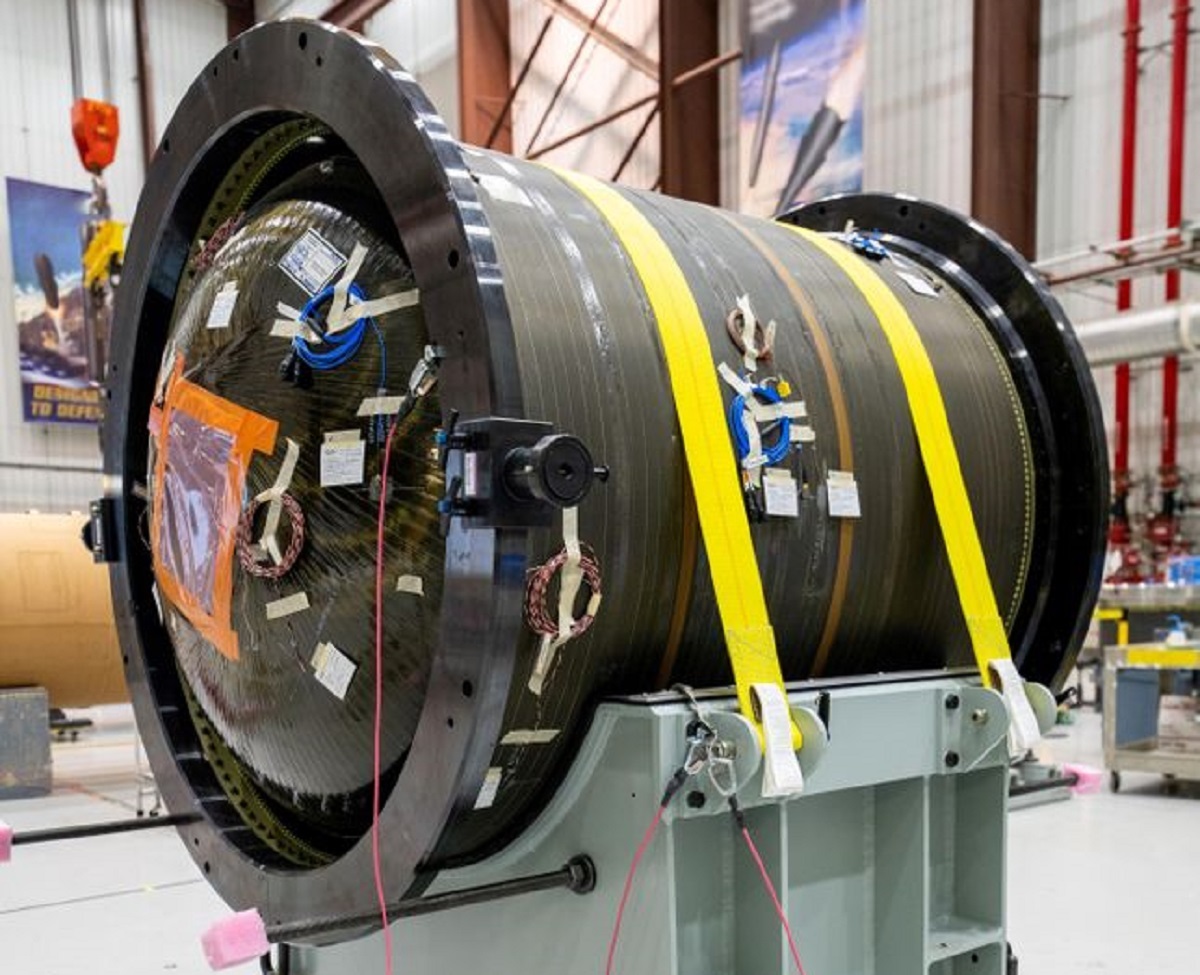Northrop Grumman Corporation delivered its Next Generation Interceptor (NGI) Stage Three solid rocket motor (SRM) to Arnold Air Force Base ahead of schedule for a full static fire test in early 2024. The SRMs will help power the NGI booster, and data from the static test will help anchor NGI’s solid rocket motors ballistic predictions, informing other SRM designs before entering qualification testing. Northrop Grumman has rapidly moved beyond designs to hardware, motors and systems for its NGI solution to lower the risk for the Missile Defense Agency. The company will complete additional full-scale static test firings for each of its NGI SRMs in 2024 to provide comprehensive data to support its All-up Round design expected later this year.
The Missile Defense Agency leads the development of anti-ballistic missiles for North America. The Next Generation Interceptor (NGI)? is a MDA program to upgrade the kill vehicles for the ground-based interceptors, with different vendors, Lockheed Martin and Northrop Grumman competing. They are tasked with meeting more complex threats than those met by the EKV. There will be more near-term technology improvement to the GBI during a longer-term process for NGI to meet more complex threats. The NGIs are to be fielded by 2027 or 2028. The Pentagon’s Office of Cost and Program Evaluation (CAPE) estimated on April 29, 2021, that it would cost $17.7 billion to develop, deploy, and maintain the next-generation interceptor (NGI).
As part of the first phase, the Missile Defense Agency allocated $7.6 billion in contract money to Northrop Grumman (in partnership with Raytheon) and Lockheed Martin to upgrade aging ground-based interceptors (GBIs). On 12 September 2021 a test of the GBI, which is designed to use a three-stage booster, successfully met its goal of operating as a two-stage booster for an EKV. The tracking sensors and computers (whether they be C2BMC, or IBCS, etc.), which follow the parabolic trajectories of the ballistic missile, count down the time to go needed before impact of the interceptor’s kill vehicle with the targeted ballistic missile.
When the tracking sensors and computers determine there is enough time to kill the ballistic missile without using the third booster stage, the kill vehicle can maneuver using its thrusters to hit the targeted ballistic missile without the third stage. This increases the probability of kill, for the kill vehicle, which can instead more closely follow the targeted missile, rather than its projected parabolic trajectory.As described, the NGI is being engineered to handle more complex situations to be able to hit maneuverable targets. On 11 December 2023 a two-stage GBI intercepted an IRBM for the first time, using integrated sensor data from the RTX AN/TPY-2 in forward-based mode, and from the Sea-based X-band radar.
















